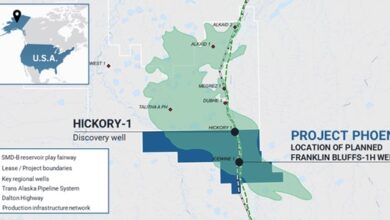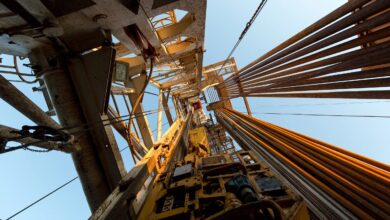Advanced technology on simple wells puts focus on performance

Applying same drilling practices to both complex and basic wells builds skills, capability, can reduce overall costs if done right
By Katherine Scott, associate editor
John Willis is chief of drilling for Occidental Oil and Gas (Oxy).
From simple to complex wells, industry remains focused on managing the cost of drilling. How is Oxy approaching this critical issue?
In 2012, we drilled about 2,500 gross-operated wells globally, primarily in older fields. After ensuring we operate safely, a key focus for our drilling organization is tracking and reducing the cost of drilling those wells.
At the end of 2012, we had approximately 70 rigs working globally, drilling mainly onshore. About 60% of our business is in the US, mostly in West Texas, New Mexico, California, South Texas, and North Dakota. We have about 21 rigs operating abroad. Oxy operations outside the US are mainly in Oman, Bahrain, Qatar and Colombia.
Even though we’re drilling basic standard technology wells, in general, we drill our simple wells using the same drilling principles and practices as very complex wells. We selectively use advanced technology – advanced rigs, PDC bits, rotary steerables – when rigorous analysis proves that we can reduce costs.
Can you describe the types of wells you’re drilling with this approach?

About half are vertical wells, and most are less than 10,000 ft, so we have a lot of simple wells. By using the same practices on the simple wells that we apply on the more complicated wells, we build our organizational skill and build our capability to drill the more complex wells effectively. On those simple wells, advanced rigs and advanced technology are effective when we have a continuous program. Profitable use of advanced technology on simple wells requires consistently high performance, which is difficult to achieve. For more complex wells, the advanced rigs and technologies are very effective.
This approach evolved over several years, taking a more performance-based approach rather than a low-bid approach. It’s been successful for us because our overall drilling performance is better now. From 2008 to 2009, we upgraded our rig fleet from around 25% advanced rigs to nearly 60%. We’ve stayed at that 60% range since, with a significant improvement in our drilling performance. It’s enabled us to increase our PDC bit percentage from 40% to over 70% of our footage. Downhole motor use has increased from 50% to about 85% of our footage. We’ve used rotary steerables on just about every kind of well, even shallow vertical wells. We are constantly re-evaluating economic benefits and in many cases have returned to conventional practices where they proved to be lower cost.
What drives this performance-based drilling at Oxy?
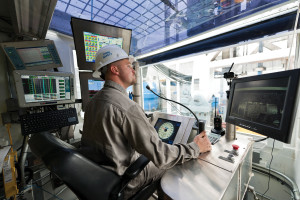
It’s driven by the goal of reducing drilling costs while meeting our drilling objectives and improving safety. In drilling, there are strategies based on unit-cost and strategies based on performance. A unit-cost strategy might focus on older and conventional rigs, basic bottomhole assemblies with very little directional control, and simple mud. A unit-cost strategy works well on simple, shallow wells.
The performance strategy focus is to drill the well quickly, with the objective of lower cost. The rig is more expensive, the downhole equipment is more expensive, the bits are more expensive, but if you cut the drilling time by 40% or 50% then it could be very economical to take a performance-based approach. You have to continuously evaluate and continuously push to get good performance. If you get an expensive operation and then drill in the same time as the low-bid operation, the cost is much higher. Consistency is essential to make the performance approach economical.
It’s been a successful strategy. Our safety performance has improved. The drilling cost are lower, the costs are more predictable, we’ve drilled wells faster, and the fields have been developed faster. It’s worked out well overall, but we continue to evaluate and adjust.
Have the longer-term contracts on your advanced-technology rigs helped with the performance-based drilling approach?
The benefit is from keeping a rig working continuously for a long term, not the term of the contract. But, longer-term contracts were the key to getting our rig fleet upgraded. High-level approval enabled us to get the high-performance rigs on long-term contracts, and it made a dramatic change in our drilling. Newbuild rig contracts are typically two to three years, some as long as five years.
A long-term contract is advantageous when it enables access to new-technology rigs. When rigs are busy, it’s the only way to get advanced rigs.

A key factor for managing drilling costs is stable long-term programs. One thing we’re working on for 2013 is to drill fewer types of wells and keep our drilling programs consistent so that we can get the rig and the other people involved very skilled at drilling a certain type of well, and drill that well repeatedly. We know we get better performance when we do that. Picking up a rig and getting a whole new set of people trained is very expensive.
You noted that you’ve been able to make rotary steerables work out, economically speaking, on almost every type of well, even shallow vertical wells. How have you seen the reliability of rotary steerable technology improve?
The overall reliability varies a lot depending on how much attention we put on it. Where we have a continuous operation with multiple rigs and a single service company for a long period, we get very good reliability because we learn what drilling parameters to avoid damaging the tools, and the service company learns what they need to do to their processes to make the tools more reliable. In places where we operate only one rig out of a shop with lots of other operators, and the tools go from one company to another, the reliability is often poor, and it’s difficult for us to improve it.
multiple rigs and a single service company for a long period, we get very good reliability because we learn what drilling parameters to avoid damaging the tools, and the service company learns what they need to do to their processes to make the tools more reliable. In places where we operate only one rig out of a shop with lots of other operators, and the tools go from one company to another, the reliability is often poor, and it’s difficult for us to improve it.
Especially in the US when demand is intense, we’d really like to see service companies do more to follow their own established procedures, which they know will deliver pretty reliable tools.
How much time does Oxy save by using advanced rigs on simple wells?
Keep in mind, reducing time is not the goal; we’re trying to reduce costs and improve safety. In one project with 3,000-ft vertical wells, before we brought in advanced-technology singles rigs, the fastest well we drilled was five days. Now the average is less than three days.
The important thing is not the reduced time, but that the costs are lower while at the same time drilling better wells and improving safety. This is from very well-designed rigs that are well-suited for the operation, and that’s the kind of thing we’re looking for with the advanced-technology rigs. Any depth well, any kind of complexity, even the simplest wells can be drilled much faster with modern, effective rigs. Big things are more hydraulic horsepower, more horsepower in the top drive and short move time. Dayrate is a big factor. The time savings must pay for a higher dayrate.
Is Oxy trying to work in more automation into its operations?
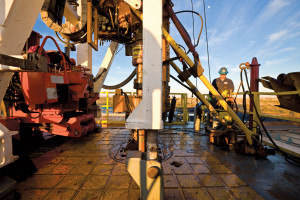
Mechanization is extensive on our advanced rigs. Remote controls, driller consoles, hydraulic systems and other mechanization have been very widely applied in our drilling operations, but automating complex tasks is not a specific goal. There’s a lot of complexity for a small incremental improvement. We’re in the low-cost end of the industry, so we watch technology as it starts in the high-cost areas, and we see it developing over the years. For us, it’s a matter of monitoring it until the cost becomes low enough to apply it in our operations.
What has been a challenge for Oxy in improving operations?
One of the biggest challenges we have in improving our operations is getting new thoughts and concepts permeated and accepted throughout the drilling staff down to the rig level – and that includes all of the contractors who work with us. Performance-driven people have learned from their experiences over the years and have developed knowledge that works.
It’s difficult to prove that something new is better. We need new ideas that really work, and the best source is from our own operations. We focus on sharing successful practices from one business unit with all of our global operations.
We use standards, recommended practices, intranet, meetings and conference calls to disseminate information, and we send our experts to visit other business units. We do a pretty good job of spreading information, but it does take a lot of work.
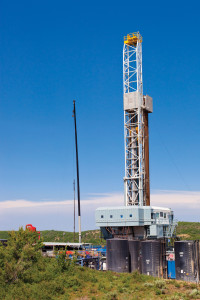
 It seems like it’s a good time to change the old mindset with all the new people coming into the industry. Is it something you’ve incorporated into your training?
It seems like it’s a good time to change the old mindset with all the new people coming into the industry. Is it something you’ve incorporated into your training?
Our total drilling management and engineering staff globally is about 200. We’ve added many experienced new-hires that did not have operator experience and 17 recent graduates in the past year.
We’ve put a lot of attention on having a good training program to get them all well-grounded in solid principles and practices for drilling so they have a good knowledge from the beginning of their career. That’s been a really important thing for us.
From an operator’s perspective, what would you like to see your contractors do to improve their performance and reduce downtime?
We would like to see contractors focus more attention on following their own standards and procedures to have reliable equipment and less turnover so we can maintain consistently good performance. We recognize their need to train people and move them to more complex operations and are happy to help with that effort, but we still need stability in our workforce to keep our operations running at a good level of performance.
We get a lot of proposals for higher-value services at higher costs. Some of those have worked out, but we still put a lot of value in good basic services at a low cost.


